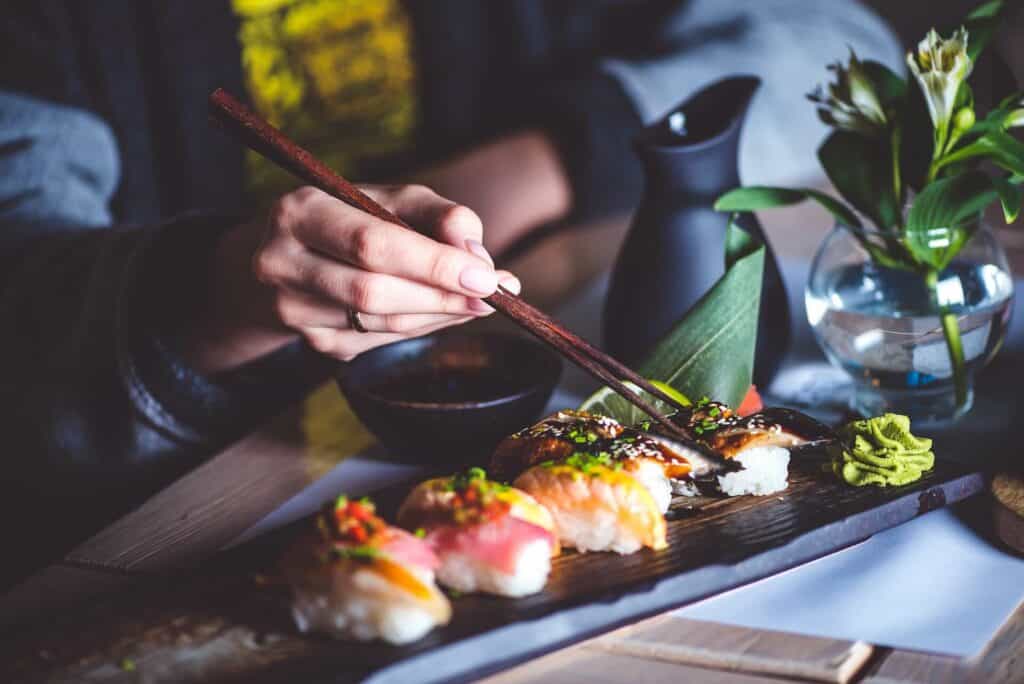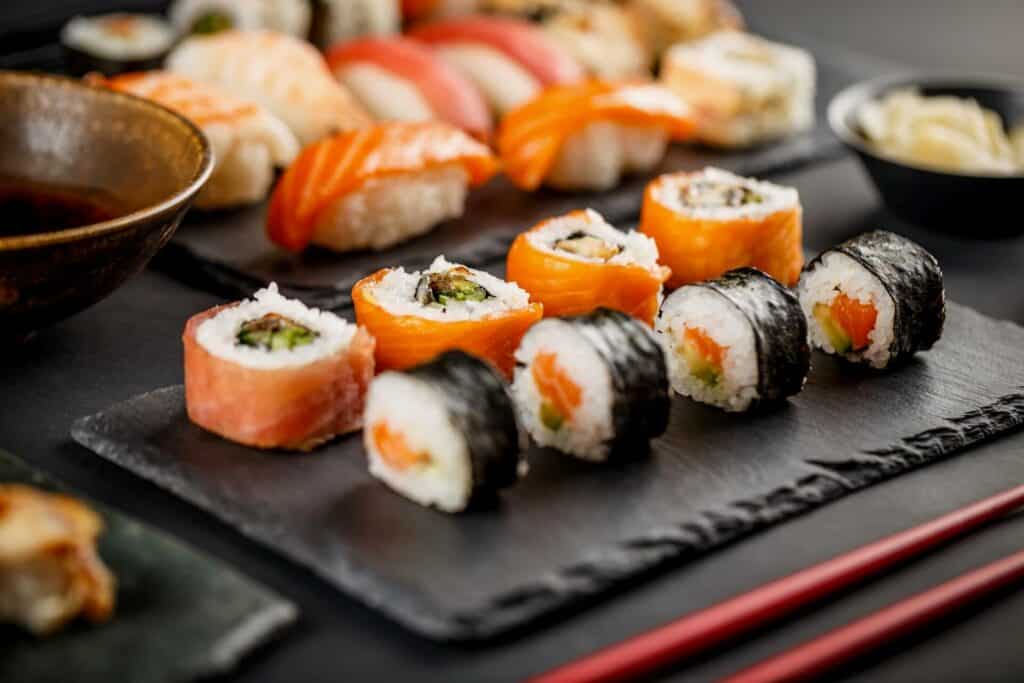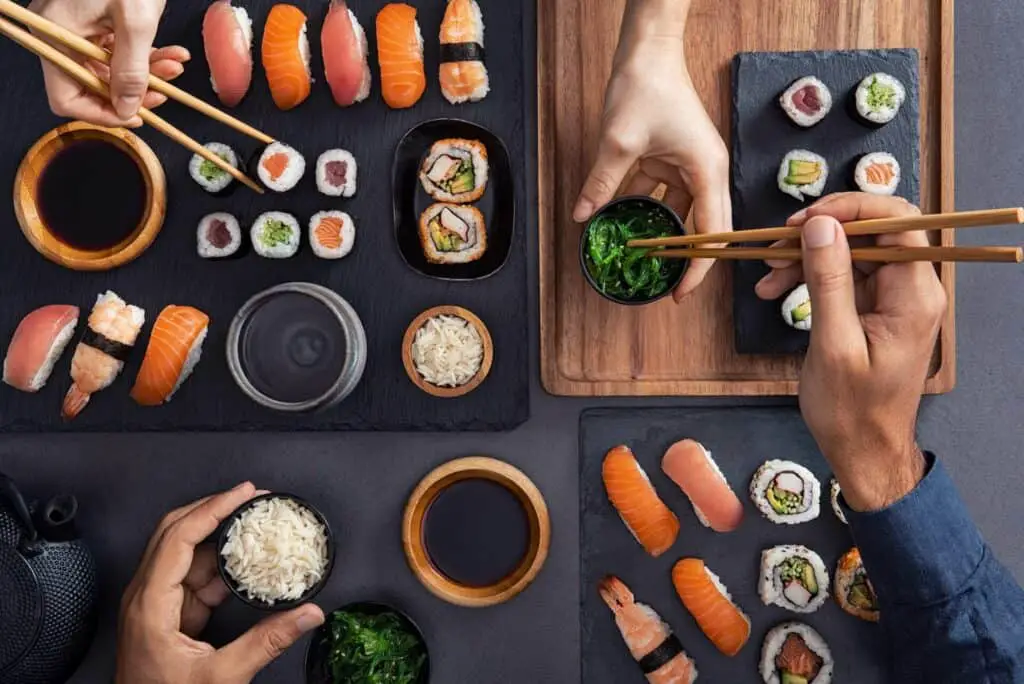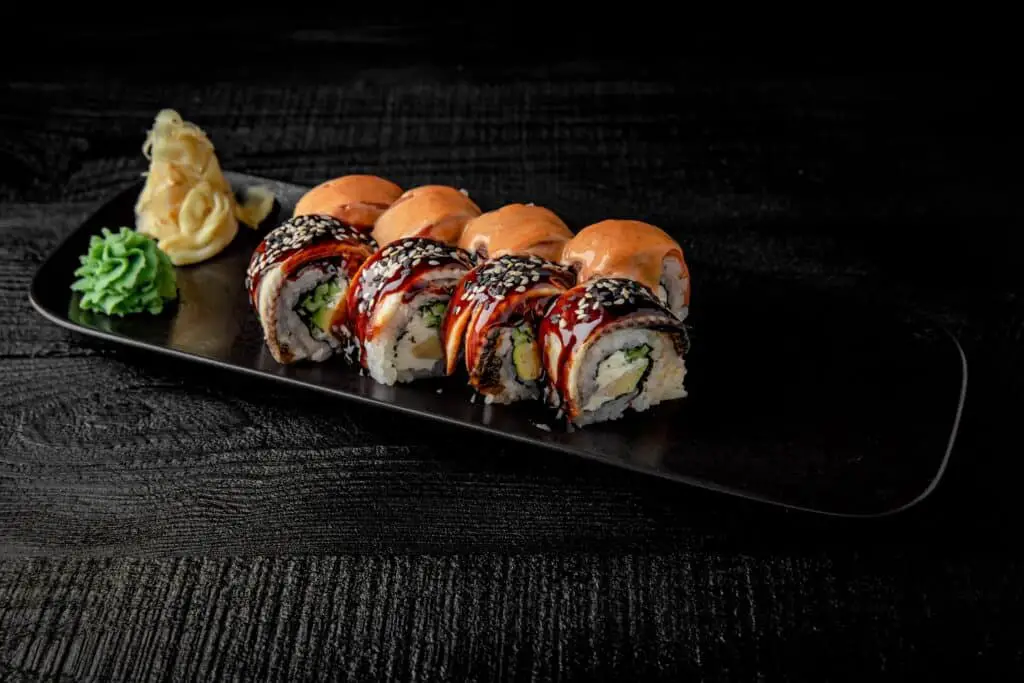If you’re an Asian food lover, then you should definitely know what makes sushi sushi. Nowadays, it might be harder to find real and original sushi that will bring the unique taste of this dish that has over thousands of years old rich history. Check all the original ingredients and have a bite of the perfect sushi.
Real and traditional Japanese sushi has four main ingredients: raw fish or vegetables, sushi rice, and seaweed. That’s what makes sushi sushi. These ingredients blend in perfectly and make the original form of this dish.


Stick around, and I’ll show you why eating this Japanese delicacy is worth attention. With the right components, of course.
What Makes Sushi Sushi – What Are the Essential Ingredients
Small pieces of raw fish wrapped in seaweed and rice is sushi. Yes, it’s that simple. The seaweed is called nori, and it’s collected with submerged bamboo nets. When it comes to picking the fish, it’s important to meet all the needed high standards of color, content, and taste. As far as rice is concerned, it needs to be medium-grained and mixed with vinegar for that unique flavor.
Nowadays, you have numerous mass-produced sushi companies that add many other flavors and ingredients, but one thing is for sure – handmade sushi is the best. The original recipe consists of chopping small pieces of fish, which are then rolled in cooked rice and seaweed by hand, and adding spices like ginger root, wasabi, and soy sauce.

Know the Origin of Sushi and Why It’s Best That Way
How did people even think of sushi as a dish? Many years ago, in southeast Asia, people began to place fish in fermenting rice in order to increase the freshness of fish. Consider that in the 4th-century, in one of the Chinese dictionaries, there was a character that meant pickled fish with salt and rice. People wanted to have the fish fresh for a longer period of time, and they discovered that by placing it into fermenting rice, the fish would be preserved. And precisely, this was the first type of sushi.
Let’s explain how cooked rice can preserve fish. When rice is cooked, it begins to slowly ferment. During that process, grains begin to release the lactic acid bacilli, which then interact with the salt and pickle the fish at the same time.
What Does Sushi Fish Grade Mean?
Although it’s not official, when you come into the ‘sushi-grade fish’ in a store, know you’ve just found yourself the highest-quality fish, so feel free to consume it raw. After it’s been caught, the fish is immediately frozen, directly on the boat. It’s an extremely important step because it kills all the parasites the fish may have contained.

What’s the Difference Between Sushi Rice and the Regular One
If you’ve never tasted or tried to make sushi, you’re probably wondering – what is actually sushi rice? It’s medium-grained white rice mixed with vinegar and some other seasonings, like sugar and salt. It has to be short or medium grain because it is more likely to stretch the amylopectin within the long-grained rice. As a result, the short grains are far more sticky, which is perfect for keeping all ingredients of sushi together and easier to eat with chopsticks.
When it comes to buying a product like this, you will surely need some guidance. So, try with probably the most popular Koshihikari rice. It’s a Japanese short-grain rice cultivar. You can also include the Nishiki sushi rice, another top-rated product many professionals use in their kitchen.
What Seaweed Should Be Used for Sushi Recipes?
For a traditional Japanese dish like sushi, you need to have the right seaweed. It has to be the kind that is thick enough to resist during the rolling process. Luckily, if you’re planning to become a sushi master, this will be specifically noted on the seaweed package that is for sushi-making. You can also spice up the recipe a bit and check how to work with roasted seaweed in the video below.
Explore Numerous Types of Sushi
As you may already know, there isn’t just one type of this Japanese dish. In fact, nowadays, there are numerous versions, but the most traditional and also the most popular are:
- Nigiri – sushi made with seaweed, rice, and raw or cooked fish.
- Maki – it’s commonly called sushi roll, and it’s fish and other garnish wrapped in seaweed.
- Uramaki – practically the same as Maki, but the rice goes after seaweed here.
- Temaki – a cone shapes sushi with the same ingredients as Nigiri, Maki, and Uramaki.
Are Sushi and Sashimi the Same?
When people are talking about sushi, probably the biggest misconception is that sashimi is a type of sushi. It’s not. The meaning of the word sashimi is ‘pierced meat’ that refers to sliced raw fish with wasabi, soy sauce, ginger, or miso. Here are some of the main differences between sushi and sashimi.
| Ingredients | Meat | Rice | Seaweed |
| Sushi | Yes | Yes | Yes |
| Sashimi | Yes | No | No |
How Did Sushi Change in Western Culture
Sushi was first introduced to the West in the early 1900s, but it didn’t become popular until World War II ended. This was when tourism, international trade, and business were once again established with Japan.
Like many things in food history, it’s impossible to determine which restaurant first introduced this Japanese dish to Western DIners. However, this doesn’t mean that Americans haven’t had a hard time getting used to the fact they’ve been eating raw fish. That’s why many American restaurants started experimenting with traditional recipes. The result was a California Roll – a mixture of crab meat, cucumber, avocado, and white rice.

A Bite of Raw Fish and Rice That Changed the World
With its remarkable history, sushi is also a unique and tasty dish many people enjoy eating. If you’re not a connoisseur, play safe and start with the most comfortable choice – nigiri. However, you shouldn’t stop there, but dare to try out some new things. After a while, you can even try to become a sushi chef on your own.